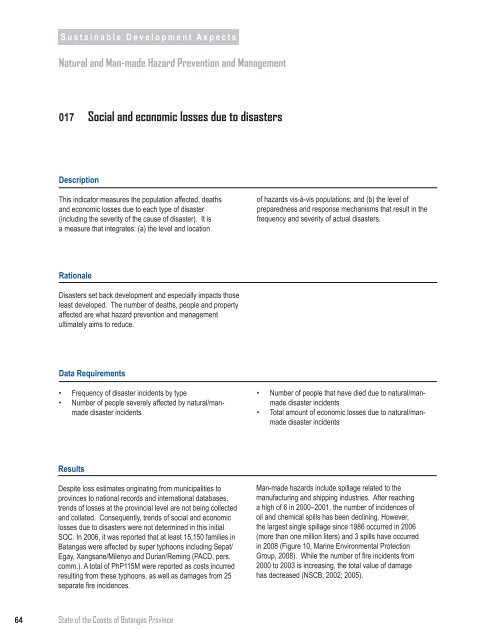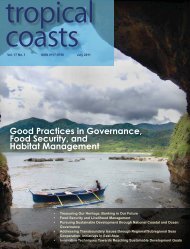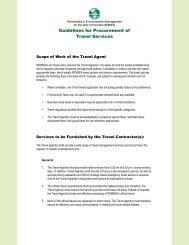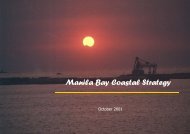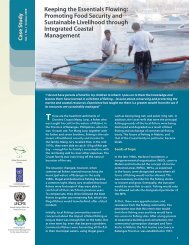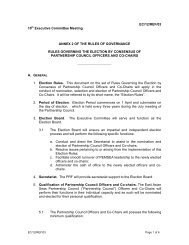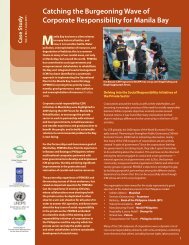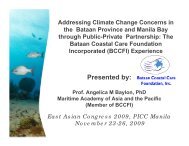Download PDF Copy - Pemsea
Download PDF Copy - Pemsea
Download PDF Copy - Pemsea
You also want an ePaper? Increase the reach of your titles
YUMPU automatically turns print PDFs into web optimized ePapers that Google loves.
S u s t a i n a b l e D e v e l o p m e n t A s p e c t s<br />
Natural and Man-made Hazard Prevention and Management<br />
017 Social and economic losses due to disasters<br />
Description<br />
This indicator measures the population affected, deaths<br />
and economic losses due to each type of disaster<br />
(including the severity of the cause of disaster). It is<br />
a measure that integrates: (a) the level and location<br />
of hazards vis-à-vis populations; and (b) the level of<br />
preparedness and response mechanisms that result in the<br />
frequency and severity of actual disasters.<br />
Rationale<br />
Disasters set back development and especially impacts those<br />
least developed. The number of deaths, people and property<br />
affected are what hazard prevention and management<br />
ultimately aims to reduce.<br />
Data Requirements<br />
• Frequency of disaster incidents by type<br />
• Number of people severely affected by natural/manmade<br />
disaster incidents<br />
• Number of people that have died due to natural/manmade<br />
disaster incidents<br />
• Total amount of economic losses due to natural/manmade<br />
disaster incidents<br />
Results<br />
Despite loss estimates originating from municipalities to<br />
provinces to national records and international databases,<br />
trends of losses at the provincial level are not being collected<br />
and collated. Consequently, trends of social and economic<br />
losses due to disasters were not determined in this initial<br />
SOC. In 2006, it was reported that at least 15,150 families in<br />
Batangas were affected by super typhoons including Sepat/<br />
Egay, Xangsane/Milenyo and Durian/Reming (PACD, pers.<br />
comm.). A total of PhP115M were reported as costs incurred<br />
resulting from these typhoons, as well as damages from 25<br />
separate fire incidences.<br />
Man-made hazards include spillage related to the<br />
manufacturing and shipping industries. After reaching<br />
a high of 6 in 2000–2001, the number of incidences of<br />
oil and chemical spills has been declining. However,<br />
the largest single spillage since 1986 occurred in 2006<br />
(more than one million liters) and 3 spills have occurred<br />
in 2008 (Figure 10, Marine Environmental Protection<br />
Group, 2008). While the number of fire incidents from<br />
2000 to 2003 is increasing, the total value of damage<br />
has decreased (NSCB, 2002; 2005).<br />
64 State of the Coasts of Batangas Province


